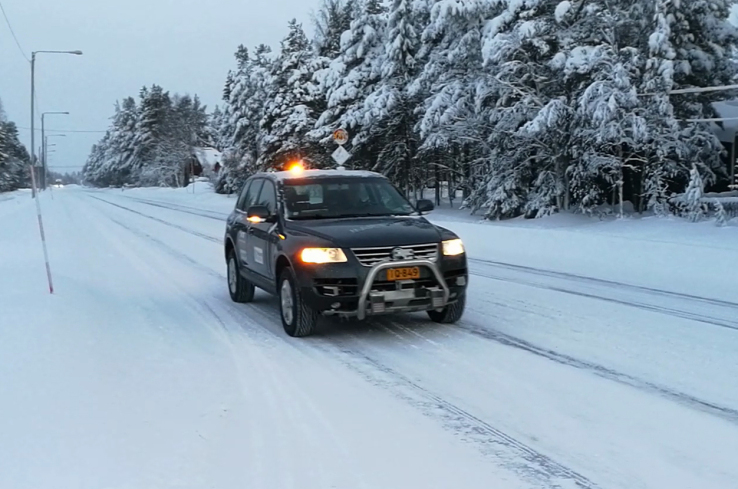

It’s one thing for an autonomous car to strut its stuff on a smooth, warm California tarmac, and quite another to do so on the frozen winter mix of northern Finland. Martti, a self-driving vehicle system homegrown in Finland, demonstrated just this in a record-setting drive along a treacherous (to normal drivers) Laplandish road.
Martti is one of two cars designed by VTT Technical Research Center; it’s designed to handle rough and icy conditions, while its “spouse” Marilyn is made for more ordinary urban drives. Different situations call for different sensors and strategies — for instance, plain optical cameras perform poorly on snowy roads, and lidar is less effective, so Martti will rely more on radar. But Marilyn has a rear-mounted lidar for better situational awareness in traffic.
Recently Martti accomplished what the researchers claim is a world first: driving fully autonomously on a real snow-covered road (and hitting 25 MPH, at that). Others from Yandex to Waymo have tested cars in snow, but from their reports these seem to have been more controlled conditions. Martti’s drive took place in Muonio on a public road almost totally obscured by snow.
“It probably also made a new world record in fully automated driving, making 40 km/h in a snowfall on snow-covered terrain without lane markings,” said project manager Matti Kutila in a VTT news release. “It could have had even more speed, but in test driving it is programmed not to exceed the limit of 40 km/h.”
I’m not sure going any faster would be wise even on straightaways. But winter driving isn’t my specialty.
The point isn’t to make a perfect consumer car for snowy weather, but to tackle the unique technical problems pertaining to it. For instance, can Martti’s optical instruments tweak the wavelength they use depending on conditions in order to gain a small but significant increase in accuracy? What about detecting icy conditions and traction problems ahead of time — how should the car collect this data, and how should it act until it’s sure what to do?
Inter-car networks may be critical for this, the researchers suggested, including both other autonomous cars on the road and specialty vehicles that can test for and broadcast information like snow pack, traction, road temperature and so on.
Ultimately this intelligence could prove highly useful for applications like self-driving tractors, logging trucks or emergency vehicles.
Soon the team will be going even deeper into the Nordic environment: “Next spring one of our vehicles can also be spotted in forest environments, when Marilyn and Martti get a new friend capable of tackling all terrains.”
Featured Image: VTT

